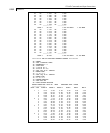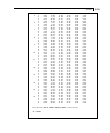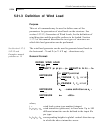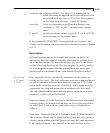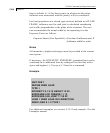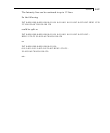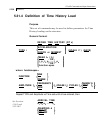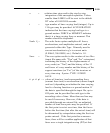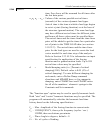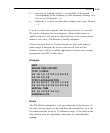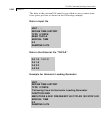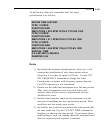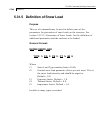
STAAD Commands and Input Instructions
Section 5
5-240
time. Zero force will be assumed for all times after
the last data point.
a
1
a
2
a
3
... a
n
= Values of the various possible arrival times
(seconds) of the various dynamic load types.
Arrival time is the time at which a load type begins
to act at a joint (forcing function) or at the base of
the structure (ground motion). The same load type
may have different arrival times for different joints
and hence all those values must be specified here.
The arrival times and the times from the time-force
pairs will be added to get the times for a particular
set of joints in the TIME LOAD data (see section
5.10.32.2). The arrival times and the time-force
pairs for the load types are used to create the load
vector needed for each time step of the analysis.
Refer to Section 5.32.10.2 for information on input
specification for application of the forcing
function and/or ground motion loads. Up to 999
arrival time values may be specified.
d = Modal damping ratio (i.e. [Percent of critical
damping]/100). Default value is 0.05 (5% of
critical damping). To enter different damping for
each mode, enter a Define Damp command
elsewhere and MDAMP here; or for composite
damping, enter CDAMP here and CDAMP ratios
for all of the members / elements/ springs in the
Constants and Set commands.
The "function-spec" option may be used to specify harmonic loads.
Both "sine" and "cosine" harmonic functions may be specified. The
program will automatically calculate the harmonic load time
history based on the following specifications -
f
0
- Max. Amplitude of the forcing function in current units.
f
2
- If FREQUENCY, then cyclic frequency (cycles / sec.)
If RPM, then revolutions per minute.
f
3
- Phase Angle in degrees, default = 0
f
4
- No. of cycles of loading.



